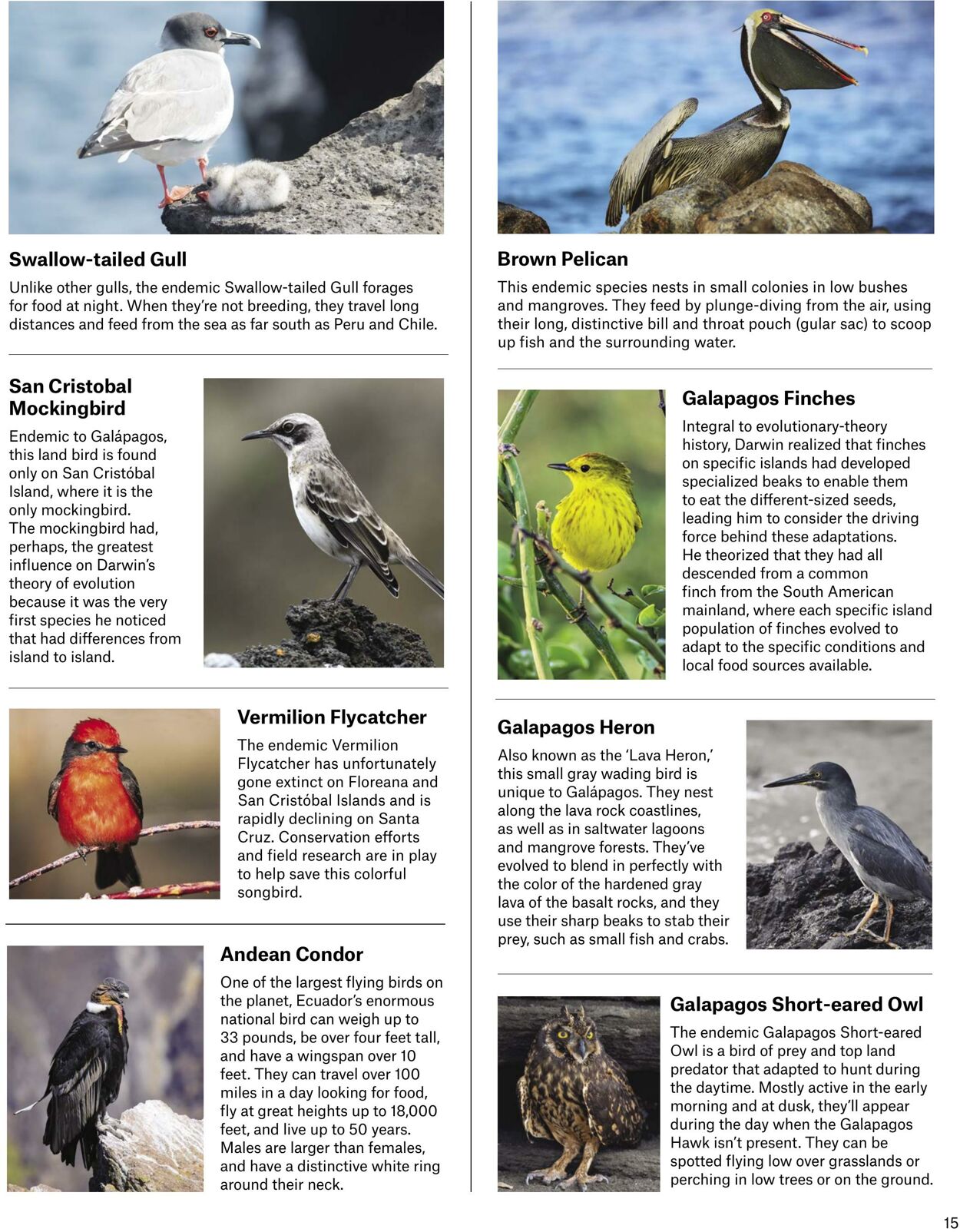













Products in this catalogue
Swallow-tailed Gull Unlike other gulls, the endemic Swallow-tailed Gull forages for food at night. When they're not breeding, they travel long distances and feed from the sea as far south as Peru and Chile. San Cristobal Mockingbird Endemic to Galapagos, this land bird is found only on San Cristobal Island, where it is the only mockingbird. The mockingbird had, perhaps, the greatest influence on Darwin’s theory of evolution because it was the very first species he noticed that had differences from island to island. Vermilion Flycatcher The endemic Vermilion Flycatcher has unfortunately gone extinct on Floreana and San Cristobal Islands and is rapidly declining on Santa Cruz. Conservation efforts and field research are in play to help save this colorful songbird. Andean Condor One of the largest flying birds on the planet, Ecuador's enormous national bird can weigh up to 33 pounds, be over four feet tall, and have a wingspan over 10 feet. They can travel over 100 miles in a day looking for food, fly at great heights up to 18,000 feet, and live up to 50 years. Males are larger than females, and have a distinctive white ring around their neck. Brown Pelican This endemic species nests in small colonies in low bushes and mangroves. They feed by plunge-diving from the air, using their long, distinctive bill and throat pouch (gular sac) to scoop up fish and the surrounding water. Galapagos Finches Integral to evolutionary-theory history, Darwin realized that finches on specific islands had developed specialized beaks to enable them to eat the different-sized seeds, leading him to consider the driving force behind these adaptations. He theorized that they had all descended from a common finch from the South American mainland, where each specific island population of finches evolved to adapt to the specific conditions and local food sources available. Galapagos Heron Also known as the ‘Lava Heron,’ this small gray wading bird is unique to Galapagos. They nest along the lava rock coastlines, as well as in saltwater lagoons and mangrove forests. They've evolved to blend in perfectly with the color of the hardened gray lava of the basalt rocks, and they use their sharp beaks to stab their prey, such as small fish and crabs. Galapagos Short-eared Owl The endemic Galapagos Short-eared Owl is a bird of prey and top land predator that adapted to hunt during the daytime. Mostly active in the early morning and at dusk, they'll appear during the day when the Galapagos Hawk isn’t present. They can be spotted flying low over grasslands or perching in low trees or on the ground.
| Name | Details |
|---|